Dark frames capture your camera’s thermal noise created during long exposures, appearing as speckles and hot pixels. By shooting frames with identical settings (ISO, exposure time, temperature) but with the lens cap on, you create reference images containing only noise patterns. In post-processing, software subtracts this noise profile from your light frames, dramatically improving signal-to-noise ratio and revealing faint celestial details. Master these calibration techniques to transform your astrophotography with cleaner, more detailed final images.
Understanding Dark Current and Thermal Noise in DSLR Sensors
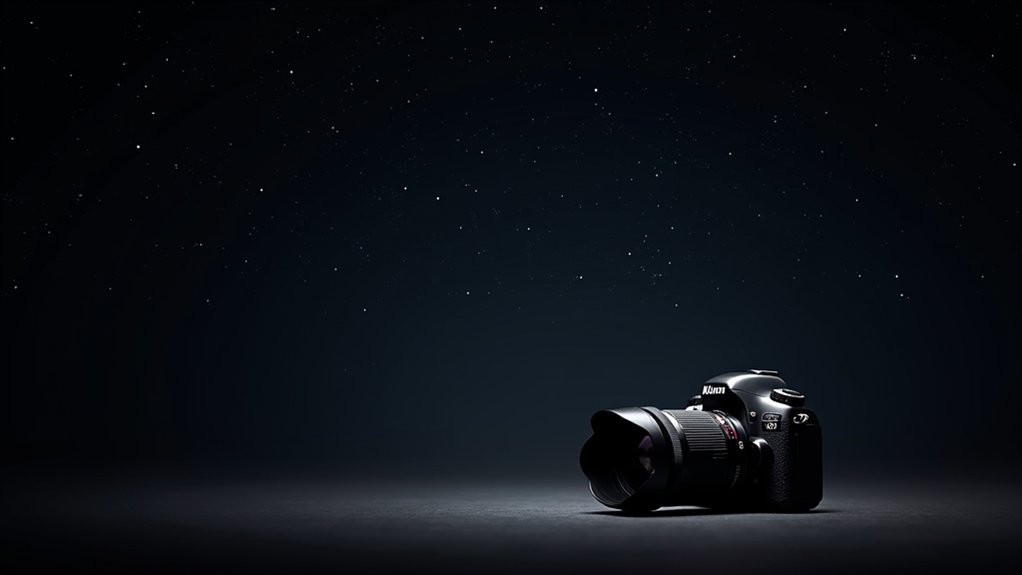
When you’re capturing the cosmos through long-exposure astrophotography, your camera’s sensor is quietly working against you. This invisible enemy is dark current—thermal noise generated within your DSLR camera even in complete darkness.
As your exposure time increases, so does this noise, typically measured in electrons per pixel per second. During a 120-second exposure, your sensor might accumulate around 0.2 electrons per pixel of unwanted noise, manifesting as random speckles and hot pixels throughout your image.
Temperature directly impacts this process; cooled sensors dramatically reduce thermal noise.
That’s why dark frames are essential for calibration—they effectively capture this noise pattern at the same settings as your light frames. By subtracting these dark frames, you’ll greatly improve your signal-to-noise ratio, revealing celestial details that would otherwise remain hidden behind thermal interference.
Optimal Camera Settings for Capturing Effective Dark Frames
To capture dark frames that truly neutralize thermal noise, you’ll need to mirror your light frame settings precisely. This means matching the exposure length, ISO, and temperature conditions of your light frames to verify effective noise reduction.
The secret to effective dark frames lies in perfect replication—same exposure, ISO, and temperature as your light frames.
Always shoot in RAW format with your camera set to Manual or Bulb mode to maintain consistent settings throughout your dark frame sequence. Place a dust cap securely over your telescope or lens to guarantee complete darkness—any stray light will compromise your results.
For the best signal-to-noise improvement, capture between 20-50 dark frames to create a robust master dark.
Consider automating this process with camera control software or a remote shutter release, which will save time and help maintain identical conditions across all frames.
Matching Dark Frame Parameters to Light Frames: ISO, Temperature and Exposure
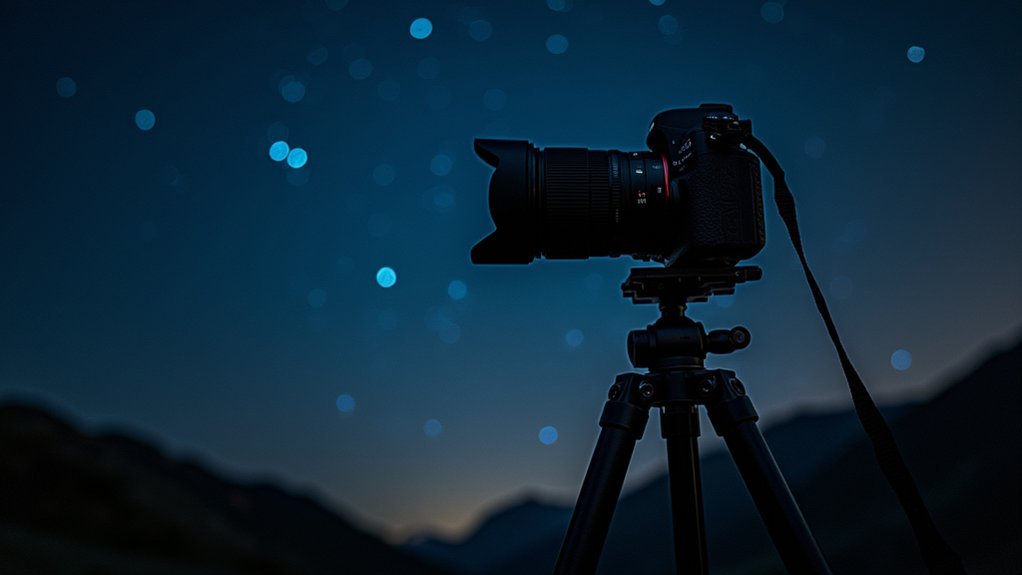
Since dark frames serve as noise templates for your astrophotography, maintaining perfect parameter alignment between your dark and light frames is absolutely critical. Your CMOS camera captures different noise profiles based on specific shooting conditions, making proper calibration impossible without matching parameters.
| Parameter | Why It Matters | Effect on Calibration |
|---|---|---|
| Exposure times | Thermal noise accumulates over time | Mismatched exposures create inaccurate noise subtraction |
| Temperature | Sensor heat generates specific noise patterns | Even small temperature differences alter noise signatures |
| ISO | Amplifies both signal and noise characteristics | Different ISO values create incompatible noise profiles |
When creating master darks, verify these three parameters exactly match your light frames. This precision guarantees dark calibration effectively removes noise patterns, resulting in cleaner images with better signal-to-noise ratio.
Building a Library of Master Dark Frames for Different Conditions
Creating an extensive dark frame library represents one of the most efficient strategies for serious astrophotographers. By collecting 20-50 dark frames for each combination of exposure time and sensor temperature, you’ll build master dark frames that markedly enhance noise reduction in your final images.
During cloudy nights or downtime, capture calibration frames matching various ISO settings and exposure durations you commonly use. This preparation guarantees you’ll have appropriate dark frames ready for effective calibration during actual imaging sessions.
Your dark frame library should be diverse, covering the range of conditions you typically encounter. This systematic approach saves considerable time and effort in future projects, as you won’t need to capture new calibration frames for every session.
Instead, you’ll simply access the most suitable master dark from your library, improving both efficiency and consistency in your astrophotography workflow.
Integrating Dark Frame Calibration Into Post-Processing Workflows
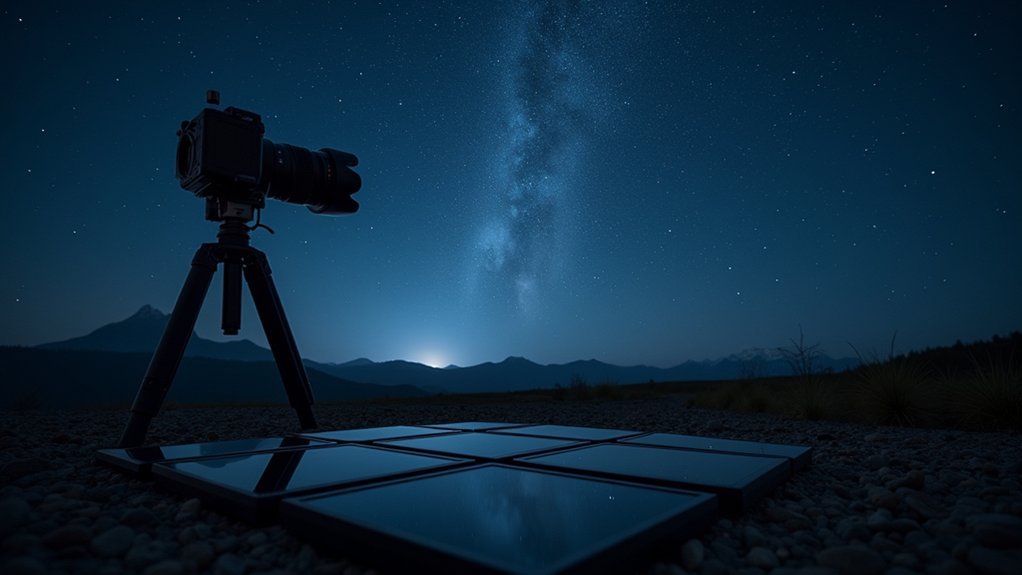
Once you’ve built an extensive dark frame library, incorporating these calibration frames into your post-processing workflow becomes a critical step toward producing clean, noise-free astronomical images.
To maximize image quality and signal-to-noise ratio, follow these integration steps:
- Match dark frames to your light frames using identical exposure settings, ISO, and temperature for accurate noise subtraction.
- Combine 20-50 dark frames using statistical averaging to create a robust master dark frame.
- Use software like DeepSkyStacker to subtract the master dark frame from your light frames.
- Continuously experiment with your workflow, as equipment variations can affect fixed pattern noise removal effectiveness.
Remember that proper dark frame calibration is essential for eliminating hot pixels and greatly enhancing the overall quality of your astrophotography results.
Frequently Asked Questions
When to Take Dark Frames?
Take dark frames directly after your light frames, keeping the same exposure time, ISO, and temperature. You’ll need 20-50 frames taken with the lens cap on in completely dark conditions.
What Is the Difference Between Dark Frames and No Dark Frames?
Dark frames remove thermal noise and fixed-pattern noise like hot pixels and amp glow. Without them, you’ll see these artifacts in your final image, reducing quality. With darks, you’ll achieve cleaner, more detailed astrophotographs.
Do Dark Frames Reduce Noise?
Yes, dark frames absolutely reduce noise. They capture your camera’s thermal noise patterns, which you’ll then subtract from light frames. This greatly enhances your signal-to-noise ratio, revealing more detail in your astrophotography images.
Is 10 Dark Frames Enough?
No, 10 dark frames isn’t enough for ideal results. You’ll get better noise reduction with 20-30 frames minimum. Many experts recommend using 50-100 dark frames for nearly noise-free calibration of your astrophotography images.
In Summary
Dark frames aren’t just an optional step—they’re essential for removing thermal noise that compromises your astrophotography. By building a library of master darks at various settings, you’ll dramatically improve your final images. Remember to match your dark frames to your light frames in ISO, exposure time, and temperature. Incorporate dark frame calibration into your workflow, and you’ll immediately notice cleaner, more detailed deep sky images.
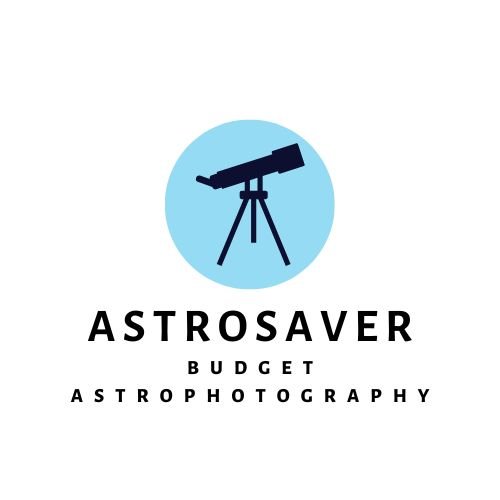
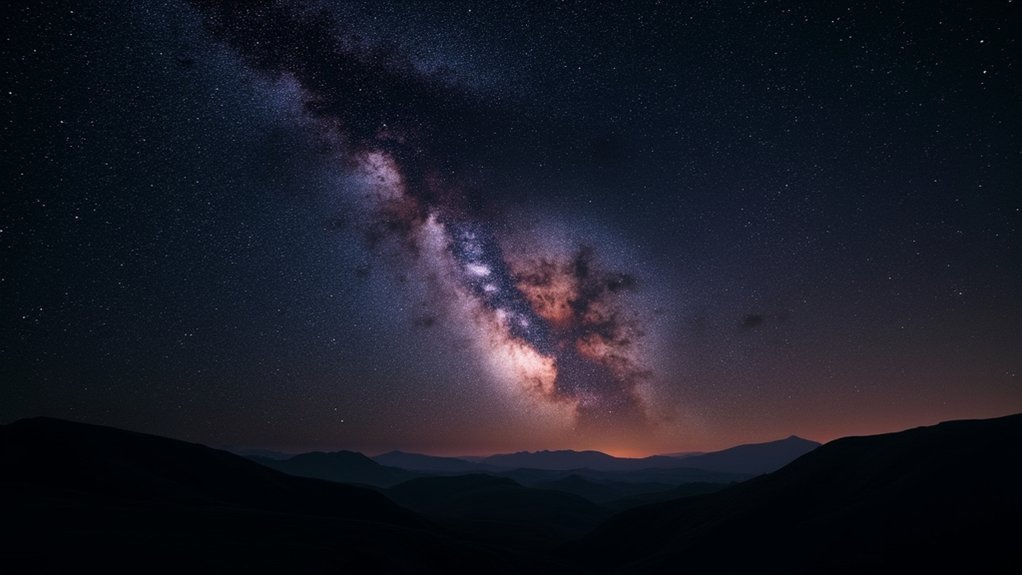
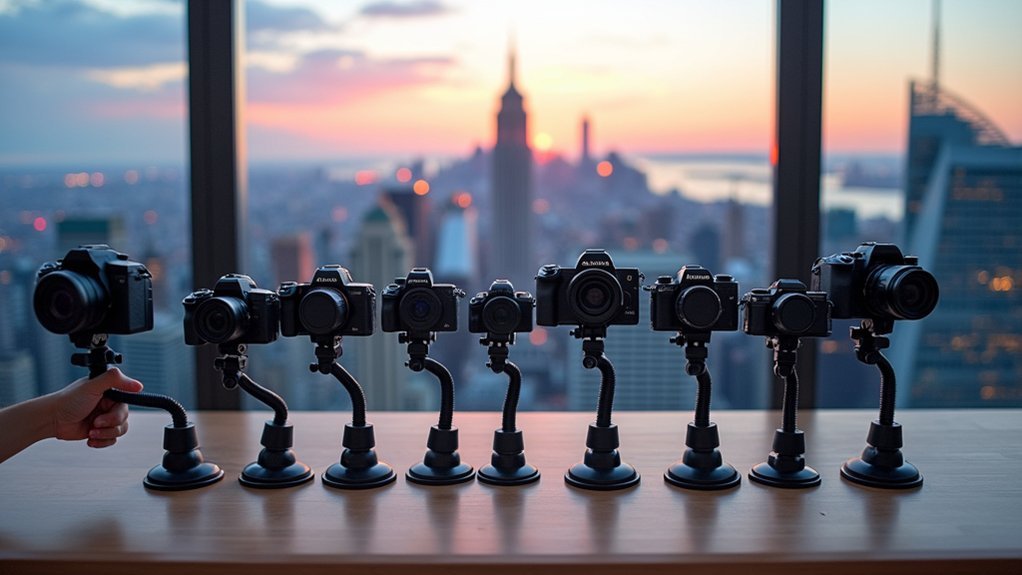

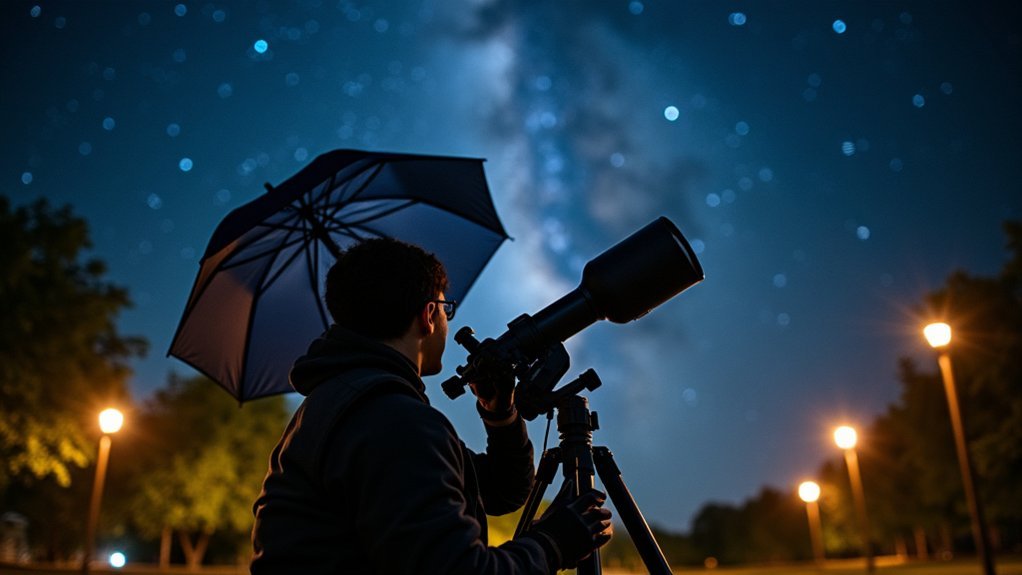
Leave a Reply